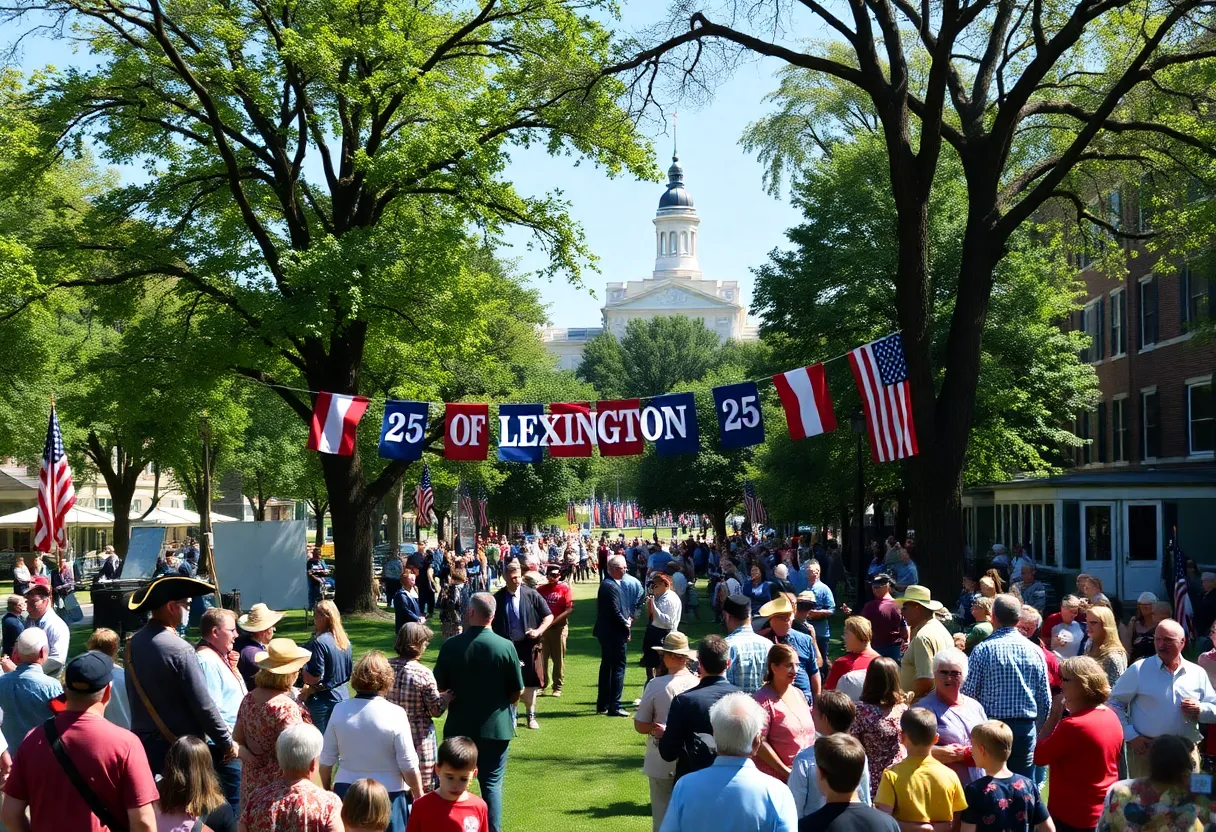News Summary
Lexington, Kentucky, recently celebrated its 250th anniversary, marking the city’s rich history from its founding in 1775 to its development into a cultural hub. The event featured educational exhibits and community gatherings, allowing residents and visitors to reflect on significant moments that shaped Lexington. The city’s history is characterized by early pioneer settlements and the establishment of Kentucky as a state in the late 18th century, highlighting Lexington’s enduring legacy and its vibrant spirit. The anniversary festivities underscored the city’s growth and ongoing cultural importance.
Lexington Celebrates Its 250th Anniversary with Notable Historical Highlights
Lexington, Kentucky, officially marked its 250th anniversary on May 6, 2022, commemorating the city’s rich history that stretches back to earlier settlements in 1775. The landmark event highlighted Lexington’s founding, development, and significant moments that shaped its growth within the state of Kentucky.
The city’s formal charter was granted by the Virginia General Assembly on May 6, 1782, making it a recognized township. However, its origins can be traced back to early pioneer settlers who camped near McConnell Springs, establishing themselves in a land that was part of the Virginia Territory before Kentucky gained statehood in 1792. The settlement of Lexington was part of a broader movement of European settlers seeking new opportunities west of the Allegheny Mountains, beginning in 1671.
The region now known as Lexington was surveyed in 1750 by notable figures Thomas Walker and Christopher Gist, who explored the lands deemed the Kentucky Country. In 1774, James Harrod founded Harrod’s Town, which was one of the earliest settlements in the area, although it would go through cycles of abandonment and resettlement. Not long after Harrod’s Town, a wave of settlers, including the renowned explorer Daniel Boone, established various settlements such as Boone’s Station and Logan’s Fort, contributing to the area’s growth.
Colonial Development and Territorial Changes
On December 31, 1776, the Virginia General Assembly designated the vast expanse west of the Big Sandy River down to the Mississippi River as Kentucky County, with Harrod’s Town recognized as the county seat. During this period, William McConnell made an encampment on a branch of Elkhorn Creek, fortifying the area’s appeal to settlers. However, the threat of Native American attacks delayed the construction of permanent structures between 1775 and 1779, presenting challenges to the early settlers.
With the fortification of the region, Colonel Robert Patterson and a group of 25 associates constructed a blockhouse at what is now the intersection of Main and Mill Streets. By 1780, as additional settlers arrived, the Virginia General Assembly decided to divide Kentucky County into three distinct counties: Fayette, Jefferson, and Lincoln. Fayette County acquired its name in honor of the Marquis de Lafayette, a distinguished hero of the American Revolutionary War, while the city of Lexington was named after the historical battle in Lexington, Massachusetts.
Path to Statehood
The newly established counties of Fayette, Jefferson, and Lincoln collaborated and ultimately sought separation from Virginia. Their efforts culminated in the formation of the Commonwealth of Kentucky in June 1792. The establishment of Kentucky as a state marked a pivotal moment for Lexington, now recognized as a vital cultural and economic hub in the region.
Throughout its history, Lexington has continued to evolve, becoming known for its rich equestrian culture, vibrant downtown, and historical landmarks. The festivities commemorating the 250th anniversary were a reminder of the town’s resilient spirit and enduring legacy from its early settlement days to its current status as a key player in Kentucky’s cultural tapestry.
The anniversary celebrations involved various activities that included educational exhibits, community gatherings, and reflections on Lexington’s storied past, helping residents and visitors alike appreciate the historical significance that this city represents in the wider context of American history.
Conclusion
As Lexington looks ahead to the future, it remains an influential city grounded in a profound historical legacy, creating a strong foundation for its continued development and community engagement. The 250th-anniversary celebration served not only as a historical acknowledgment but also as inspiration for future generations to carry forward the city’s spirit of pioneering and resilience.
Deeper Dive: News & Info About This Topic
HERE Resources
Student Evacuated from Southern Middle School After Fire Challenge Incident
University of Kentucky Launches New Bourbon Brand WildCask
Lexington Kicks Off 250th Anniversary with Homecoming Celebration
Trump Administration Alters Arts Funding Landscape
Federal Investigation into Former Cybersecurity Chief
Lexington Herald-Leader Celebrates 137 Years and 250 Years of History
Kamala Harris Critiques Trump’s Policies Post-Election
Heroic Rescue at Sea: USS Midway’s Legendary Evacuation
Lexington Children’s Museum Seeks Larger Location
Lexington Celebrates 250th Anniversary with History Hop
Additional Resources
- Kentucky.com: College Sports News
- Wikipedia: Lexington, Kentucky
- New York Times: Battle of Lexington Anniversary
- Google Search: Lexington Kentucky History
- WISTV: Criminal History in Columbia
- Encyclopedia Britannica: Kentucky
- WKYT: Lexington Sculpture Highlights History
- Google News: Lexington 250th Anniversary
- LEX18: Lexington Free History Hop
- Encyclopedia Britannica: Equestrian
- Smiley Pete: LexHistory Museum Expansion

Author: STAFF HERE LEXINGTON KY STAFF
The LEXINGTON STAFF WRITER represents the experienced team at HERELexingtonKY.com, your go-to source for actionable local news and information in Lexington, Fayette County, and beyond. Specializing in "news you can use," we cover essential topics like product reviews for personal and business needs, local business directories, politics, real estate trends, neighborhood insights, and state news affecting the area—with deep expertise drawn from years of dedicated reporting and strong community input, including local press releases and business updates. We deliver top reporting on high-value events such as Woodland Art Fair, Crave Food and Music Festival, and Railbird Festival. Our coverage extends to key organizations like Commerce Lexington and Blue Grass Community Foundation, plus leading businesses in education, manufacturing, and technology that power the local economy such as University of Kentucky, Toyota Motor Manufacturing, and Lexmark. As part of the broader HERE network, including HEREBowlingGreen.com and HERELouisville.com, we provide comprehensive, credible insights into Kentucky's dynamic landscape.





